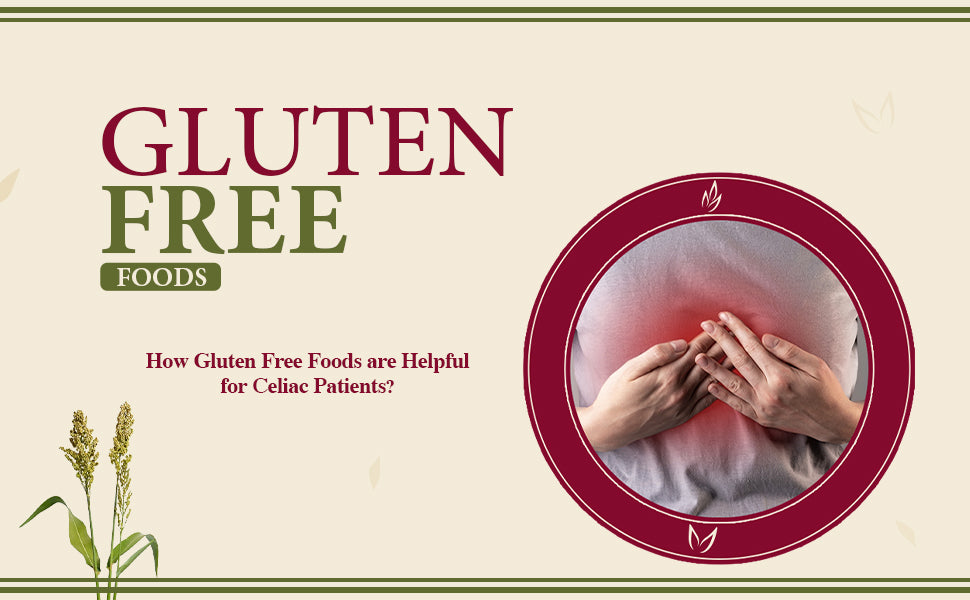Celiac Friendly Diet

Food products made from grains, mainly wheat, such as pasta, oats, bread, cereal, and pizza contain the highest amount of a protein named gluten. We can say that we are eating gluten daily. Now what happens if we talk about a disease that is triggered by eating foods containing gluten?
Eating gluten-containing foods can set off the chronic digestive and immunological illness known as celiac disease, which harms the small intestine. A large number of celiac disease patients are not diagnosed yet. On the other hand, doctors calculate that approximately 2 million Americans and 1% of individuals worldwide suffer from celiac disease.
Except for Celiac disease, a person can also have gluten sensitivity. If you have gluten sensitivity, you may have symptoms like those of celiac disease, such as tiredness and abdominal pain and tiredness. Gluten sensitivity does not cause any damage to the small intestine.
Imagine eating cake to make your mood good and getting sick because of it. Doesn’t sound fun. Right?
It is advised to people having celiac disease or gluten sensitivity to avoid their exposure to gluten. There are so many gluten free foods and also gluten free products available in the market, especially for these kinds of individuals. To maintain a gluten-free diet, a person should be completely aware of gluten-free foods. Some of them are listed below:
Gluten Free Whole Grains
• Quinoa
• Brown Rice
• Wild Rice
• Buckwheat
• Sorghum
• Teff
• Arrowroot
• Gluten-free Oats
• Tapioca
• Millet
Gluten Free Fruits
• Citrus fruits, including Oranges and Grapefruit
• Pears
• Berries
• Peaches
• Apples
• Bananas
Gluten Free Vegetables
• Cruciferous Vegetables, including Cauliflower and Broccoli
• Greens, such as Spinach, Kale, and Swiss chard
• Starchy Vegetables, including Potatoes, Corn, and Squash
• Carrots
• Radishes
• Green Beans
• Bell Peppers
• Mushrooms
• Onions
Gluten Free Proteins
• Legumes (Beans, Lentils, pulses, Peas, Peanuts)
• Seafood (Fresh fish, Scallops, Shellfish)
• Unflavored Soy Foods (Tofu, Tempeh, Edamame, etc.)
• Red meat (Fresh Beef, Pork, Lamb, Bison)
• Poultry (Fresh Chicken, Turkey)
Gluten Free Dairy Products
• Milk
• Butter and Desi Ghee
• Cheese
• Cream
• Cottage cheese
• Sour cream
• Yogurt
Gluten Free Fats and Oils
• Butter and Ghee
• Olives and Olive oil
• Avocados and Avocado oil
• Coconut oil
• Vegetable and Seed oils, including Sesame oil, Canola oil, and Sunflower oil
Gluten Free Beverages
• Water
• 100% Fruit juice
• Coffee
• Tea
• Some Alcoholic Beverages, including Hard Ciders, Wine and Beer made from Gluten-free Grains
• Many types of Sports Drinks, and Energy Drinks (although check the label for additives always)
• Lemonade
How Himalayan Chef Gluten Free Flour is a Healthy Choice?
Premium quality flour prepared from 100% natural whole grains that have been expertly milled at slow speed is called Himalayan Chef Gluten-Free Flour. Our exclusive combination of carefully chosen grains comes from reliable sources, and we precisely retain the inherent goodness of the ingredients. Our flour is adaptable and will improve the flavor of your baked items with its nutty, nutritious flavor. This flour's light and fluffy texture and neutral flavor make it ideal for making delectable gluten-free baked items.
What Makes Difference Between Regular Flour and Gluten Free Flour
• Gluten free flour differs from conventional flour in texture and consistency since it does not include gluten.
• Because of this absence, baked items made with gluten free flour may seem a little crumbly or have a distinct mouthfeel.
• Since gluten is known to be a binding agent, baking without gluten frequently calls for the addition of extra binding agents, like xanthan gum or guar gum, which help replicate the binding qualities of gluten. Better texture and structure are produced as a result of these ingredients' ability to keep the batter or dough together.
Health Benefits of Gluten Free Flour
⦿ Better Digestion: Eating gluten can cause digestive problems, including bloating, diarrhea, and abdominal pain, for people who have celiac disease or gluten sensitivities. Choosing gluten-free flour removes these problems and encourages better digestion.
⦿ Enhanced Nutrient Diversity: Gluten-free flours are frequently made from a variety of grains, including maize and rice. Because of their diversity, these other grains provide your diet with a wider variety of nutrients, such as vitamins, minerals, and antioxidants.
⦿ Balanced Blood Sugar Levels: The glycemic index of some gluten-free flours, such as coconut and almond flour, is lower than that of regular wheat flour. This indicates that they have a less dramatic effect on blood sugar levels, which makes them appropriate for people trying to control their blood sugar.
⦿ Aids in Weight Management: Compared to wheat flour, several gluten-free flours are naturally lower in calories and carbs. This gives you an option to enjoy baked products with fewer calories, which can help with weight management efforts.
⦿ Encourages Heart Health: Soluble fiber, found in oat flour and other gluten-free flours, has been connected to better heart health by assisting in the reduction of cholesterol.

The Bottom Line
There are several options available to you if you must eliminate gluten to maintain a well-balanced diet. Fresh meat, fish, and poultry, as well as a variety of fruits, vegetables, legumes, whole grains, dairy products, and pure oils, are naturally gluten free. The main items that must be avoided when adhering to a gluten-free diet are wheat, rye, and barley. Additionally, manufactured foods like canned and boxed goods frequently include gluten added to them. Nonetheless, maintaining a gluten-free diet is not only manageable but also fulfilling if you concentrate on consuming a lot of fresh, complete, gluten-free foods and very little processed food.



